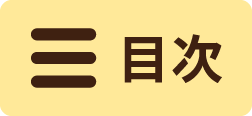9 July, Keigo Higashino
文字数 6,332文字
All of Your Faces
I woke in the morning to thin light coming through a gap in the curtains. I sat up and checked my watch on the bedside table. It was past 7 a.m. already, so I stuck the thermometer into my armpit. It beeped almost immediately. They’re really getting quick, thermometers these days.
The doctor came in after breakfast. He was wearing a blue PPE suit, mask, goggles, and plastic head covering. I wondered if I’d ever get to see his actual face.
“Positive again, sorry” he said, sounding genuinely apologetic.
My shoulders slumped. “Okay.”
He glanced at the paper where I had recorded my temperature before brandishing a long, cotton-tipped swab in his hand. “Ready?”
I don’t know what the swab is called, if it has a proper name, but it reminds me of the
“Ready,” I said, resignedly lifting my gaze.
The doctor jammed the
The doctor left after promising he’d see me again tomorrow. He tossed his PPE suit, mask, and everything else in a cardboard box by the door. Everyday, he put it on, just to throw it out minutes later.
My wife had tested positive twenty days earlier. A cluster at the place where she works.
The day after she went into the hospital, the healthcare center called, saying that they were asking all “close contacts” to get tested.
I do have a slight fever. Not enough to worry about though. If I hadn’t known my wife was infected, I wouldn’t have even gotten tested.
Normally, people without symptoms can get out after ten days. People with symptoms can get out after they recover as long as they test negative twice in a row or spend 72 hours symptom-free ten days after the initial symptoms.
Ten days had already passed since I was admitted, and I felt fully recovered, but the light fever was holding me back. I couldn’t claim full recovery until my temperature went down to normal, or I tested negative and proved that the fever had nothing to do with my infection. But each new day brought another positive result. My fever wouldn’t go down. I couldn’t leave.
I sent an email to my wife, who had gotten out of the hospital well before me. It was the same every day. “Positive again.”
She called right away. “Too bad! How do you feel?”
“Fine. Got a light fever, the usual. They tested me again today.”
“Okay,” my wife said. She knew better than to offer empty words of encouragement.
But when the doctor strode in the next morning, I had a good feeling about it. I couldn’t tell because of the mask, but I could have sworn he was smiling.
Then, the word I’d been waiting for, quiet but confident: “Negative.”
I nodded and thanked him. It felt like I’d been given a great gift.
“Well, if you’re ready,” the doctor said, another
The next day’s test came up negative again. There were tears in my wife’s eyes when she came to the hospital to pick me up. I felt a warmth spread through my chest. If there hadn’t been people watching, I might have made a scene.
We took a taxi back to our home of many years, a traditional Japanese-style dwelling.
I took my shoes off in the entranceway, but when I stepped up into the hall, everything around me faded away.
I woke to the sound of a familiar voice calling me. I was lying in my futon.
“He’s come to.” My wife’s voice. She sounded relieved.
My blurry vision gradually cleared. There was my wife, my daughter, and her husband, and my granddaughter too.
“You’re . . . all here,” I said, straining to be heard. My voice was paper thin.
“Congratulations on getting out of the hospital,” my granddaughter said. She’s in second grade.
“Thank you, little one. It’s good to see all of your faces.”
Before I caught COVID-19, I had spent most of the six months since I was diagnosed with terminal cancer at home. I’d made it past 80 and had no regrets. But I did want to die at home, with my family there.
I reached out of the futon toward my wife. She looked ready to cry. “I’m sorry for getting you sick,” she said, taking my hand.
I shook my head and smiled. It was no fault of hers. She had taken good care of me this whole time.
“The doctor said you shouldn’t hold his hand,” my granddaughter said.
“It’s okay,” I said, and gave her a smile too. What was the point of being with your family if you couldn’t hold their hands?
A deep weariness came over me. As the room began to fade, it occurred to me I hadn’t said goodbye. But it’s all right. That’s what funerals are for.
Translated by Alexander O. Smith /Arranged by TranNet KK
Keigo Higashino
Born in Osaka, 1958. Graduated from Osaka Prefecture University. Made his literary debut in 1985 with
I woke in the morning to thin light coming through a gap in the curtains. I sat up and checked my watch on the bedside table. It was past 7 a.m. already, so I stuck the thermometer into my armpit. It beeped almost immediately. They’re really getting quick, thermometers these days.
37.5℃
. I sighed.The doctor came in after breakfast. He was wearing a blue PPE suit, mask, goggles, and plastic head covering. I wondered if I’d ever get to see his actual face.
“Positive again, sorry” he said, sounding genuinely apologetic.
My shoulders slumped. “Okay.”
He glanced at the paper where I had recorded my temperature before brandishing a long, cotton-tipped swab in his hand. “Ready?”
I don’t know what the swab is called, if it has a proper name, but it reminds me of the
koyori
paper feathers we used to make crafts with, so that’s what I call it.“Ready,” I said, resignedly lifting my gaze.
The doctor jammed the
koyori
up my nostril. It stabbed deep, until I thought it might hit the back of my throat, and he jiggled and stirred it around. The pain brought tears to my eyes. I’ll never get used to this.The doctor left after promising he’d see me again tomorrow. He tossed his PPE suit, mask, and everything else in a cardboard box by the door. Everyday, he put it on, just to throw it out minutes later.
Please
be
negative
tomorrow.
My wife had tested positive twenty days earlier. A cluster at the place where she works.
The day after she went into the hospital, the healthcare center called, saying that they were asking all “close contacts” to get tested.
That’s
not
good
, I thought, and sure enough, the test came back positive. I was admitted to this hospital room the following day. Total isolation. No family visits, no friends. But I don’t feel sick. No cough, no trouble breathing.I do have a slight fever. Not enough to worry about though. If I hadn’t known my wife was infected, I wouldn’t have even gotten tested.
Normally, people without symptoms can get out after ten days. People with symptoms can get out after they recover as long as they test negative twice in a row or spend 72 hours symptom-free ten days after the initial symptoms.
Ten days had already passed since I was admitted, and I felt fully recovered, but the light fever was holding me back. I couldn’t claim full recovery until my temperature went down to normal, or I tested negative and proved that the fever had nothing to do with my infection. But each new day brought another positive result. My fever wouldn’t go down. I couldn’t leave.
I sent an email to my wife, who had gotten out of the hospital well before me. It was the same every day. “Positive again.”
She called right away. “Too bad! How do you feel?”
“Fine. Got a light fever, the usual. They tested me again today.”
“Okay,” my wife said. She knew better than to offer empty words of encouragement.
But when the doctor strode in the next morning, I had a good feeling about it. I couldn’t tell because of the mask, but I could have sworn he was smiling.
Then, the word I’d been waiting for, quiet but confident: “Negative.”
I nodded and thanked him. It felt like I’d been given a great gift.
“Well, if you’re ready,” the doctor said, another
koyori
in his hand. I lifted my chin like an obedient hound.The next day’s test came up negative again. There were tears in my wife’s eyes when she came to the hospital to pick me up. I felt a warmth spread through my chest. If there hadn’t been people watching, I might have made a scene.
We took a taxi back to our home of many years, a traditional Japanese-style dwelling.
Home
at
last.
I took my shoes off in the entranceway, but when I stepped up into the hall, everything around me faded away.
Grandpa,
grandpa!
I woke to the sound of a familiar voice calling me. I was lying in my futon.
“He’s come to.” My wife’s voice. She sounded relieved.
My blurry vision gradually cleared. There was my wife, my daughter, and her husband, and my granddaughter too.
“You’re . . . all here,” I said, straining to be heard. My voice was paper thin.
“Congratulations on getting out of the hospital,” my granddaughter said. She’s in second grade.
“Thank you, little one. It’s good to see all of your faces.”
Now,
I
can
die.
Before I caught COVID-19, I had spent most of the six months since I was diagnosed with terminal cancer at home. I’d made it past 80 and had no regrets. But I did want to die at home, with my family there.
I reached out of the futon toward my wife. She looked ready to cry. “I’m sorry for getting you sick,” she said, taking my hand.
I shook my head and smiled. It was no fault of hers. She had taken good care of me this whole time.
“The doctor said you shouldn’t hold his hand,” my granddaughter said.
“It’s okay,” I said, and gave her a smile too. What was the point of being with your family if you couldn’t hold their hands?
A deep weariness came over me. As the room began to fade, it occurred to me I hadn’t said goodbye. But it’s all right. That’s what funerals are for.
Translated by Alexander O. Smith /Arranged by TranNet KK
Keigo Higashino
Born in Osaka, 1958. Graduated from Osaka Prefecture University. Made his literary debut in 1985 with
Hōkago
(After school), for which he won the 31st Edogawa Rampo Prize. He also received the 52nd Mystery Writers of Japan Award in 1999 forHimitsu
, the 134th Naoki Prize in 2005 and 6th Honkaku Mystery Award in 2006 forThe
Devotion
of
Suspect
X
, the 7th Chūōkōron Literary Award in 2012 forThe
Miracles
of
the
Namiya
General
Store
, the 26th Shibata Renzaburō Award in 2013 forMugen
bana
(Phantasmal flower), and the Yoshikawa Eiji Prize for Literature in 2014 forInori
no
maku
ga
oriru
toki
(When the curtain falls on prayer). Won the Noma Publishing Culture Prize in 2019 for his contributions to the world of publishing, both in Japan and abroad. His most recent work isKusunoki
no
ban’nin
(The guard of the camphor tree).


